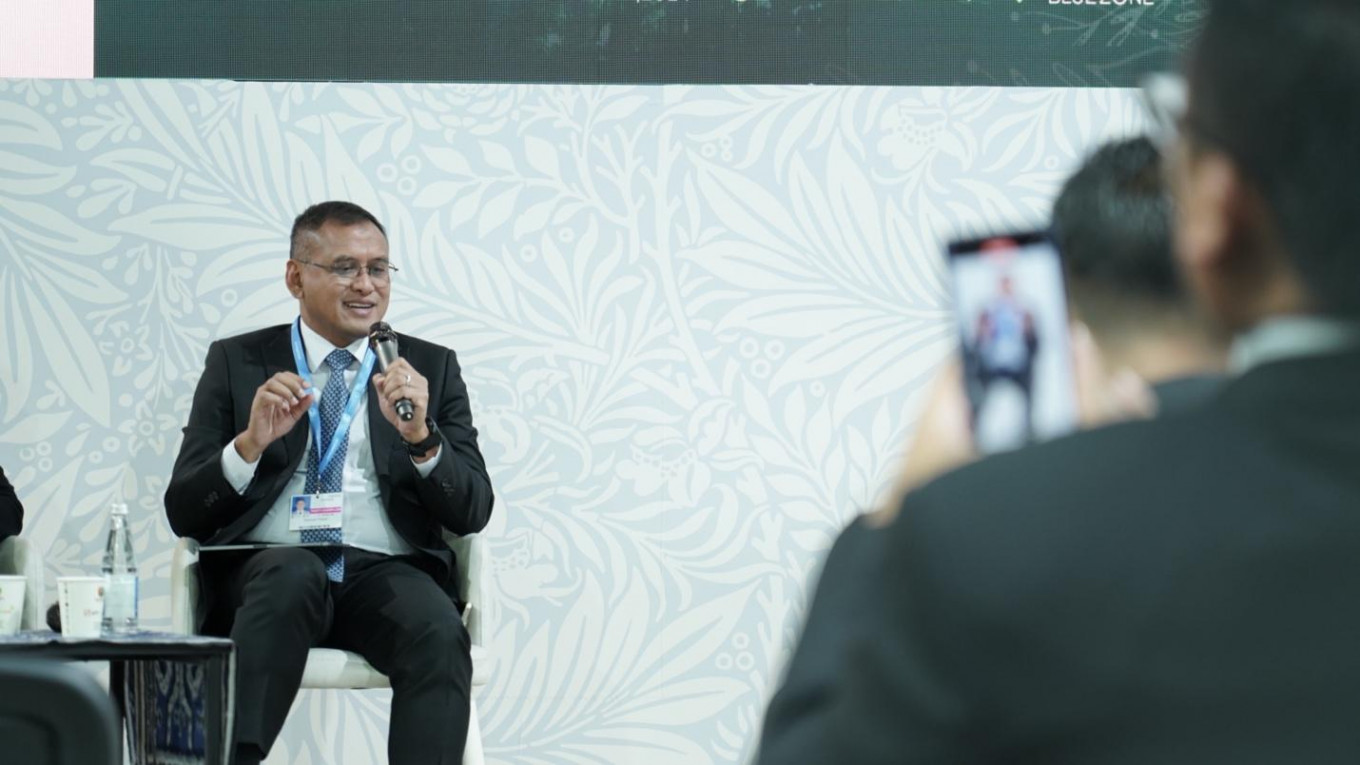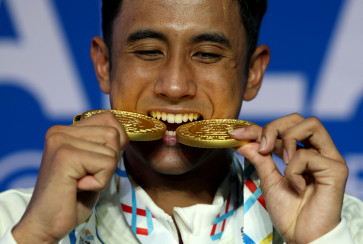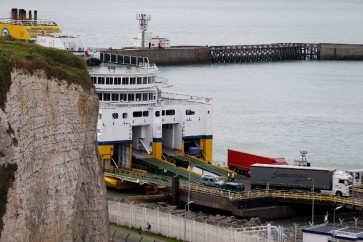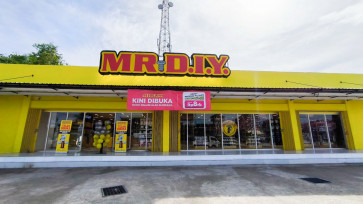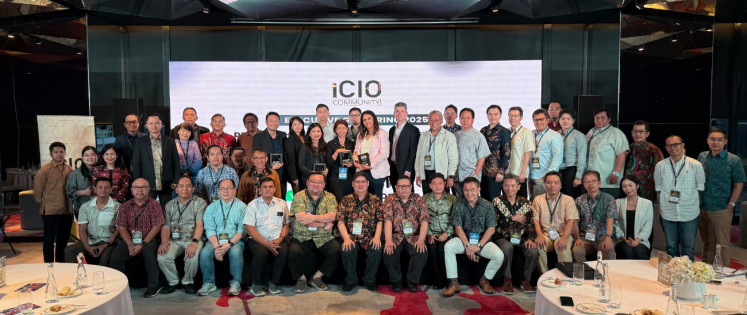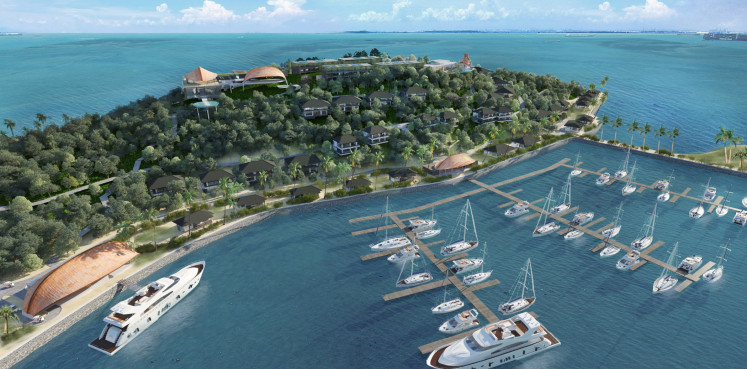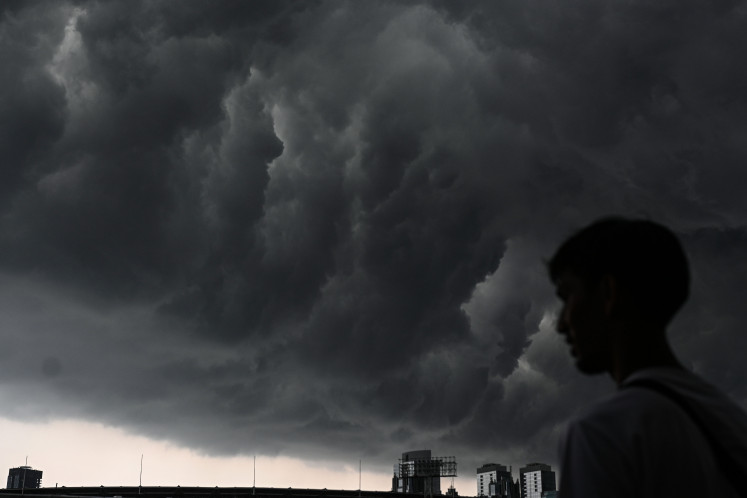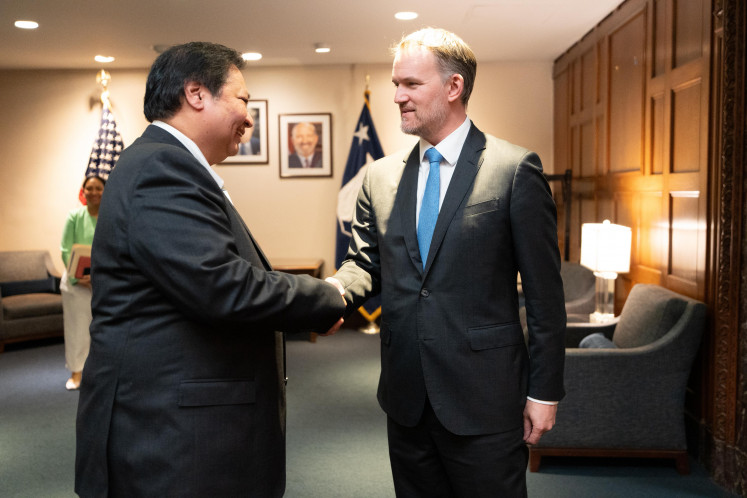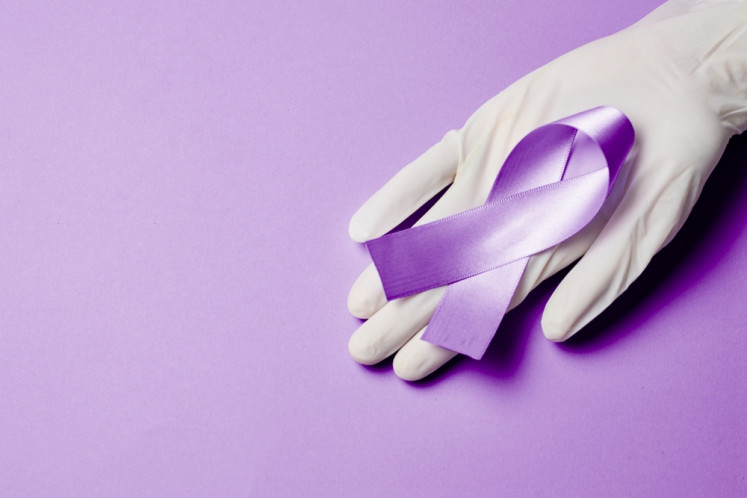Popular Reads
Top Results
Can't find what you're looking for?
View all search resultsPopular Reads
Top Results
Can't find what you're looking for?
View all search resultsPupuk Indonesia launches world’s first hybrid green ammonia project at COP29
Change text size
Gift Premium Articles
to Anyone
P
T Pupuk Indonesia (Persero) took center stage at the United Nations Climate Change Conference (COP29) in Baku, Azerbaijan, to announce the Green Ammonia Initiative from Aceh (GAIA). It is the world’s first hybrid green ammonia project and aims to position Indonesia as a global leader in food security and sustainable energy solutions to help achieve the country’s target of net-zero emissions by 2060.
By integrating water electrolysis, GAIA will enable Pupuk Iskandar Muda’s (PIM) plants in Lhokseumawe, Aceh, to produce both conventional ammonia from natural gas and green ammonia from renewable hydrogen.
The natural gas is to be supplied by state oil and gas holding company PT Pertamina, while green hydrogen is to be supplied by state electricity firm PT PLN. Ammonia is mostly used as raw material for the production of nitrogen, phosphorous and potassium (NPK) and ammonium sulfate (ZA) fertilizers, as well as petrochemicals and similar applications.
“GAIA is more than asset optimization. It is a bold step toward sustainability that balances environmental, economic and security needs in food and energy,” Pupuk Indonesia president director Rahmad Pribadi said at a panel discussion on Monday at the Indonesia Pavilion on the sidelines of COP29 in Baku.
Joining Rahmad at the panel discussion were PT Astra International director Gita Tiffany Boer, PT Riau Andalan Pulp and Paper president director Sihol Aritonang, PT Medco Energi Internasional director and administrative officer Amri Siahaan and PT Vale Indonesia president director and CEO Febriany Eddy. The panel discussion was moderated by Efransjah.
As the largest end-based fertilizer producer in the Asia-Pacific, Middle East and North Africa regions, Pupuk Indonesia produces 14.5 million tonnes of fertilizers, of which 9.3 million tonnes are urea. In addition to fertilizers, the company produces a range of chemicals, including ammonia.
To produce and distribute green ammonia in Lhokseumawe, Pupuk Indonesia has formed a joint venture with Japan’s Toyo Engineering Corporation and ITOCHU Corporation. Toyo will offer engineering, procurement and construction (EPC) expertise, and ITOCHU will support the marine bunkering supply chain.
The international partnership with Toyo and ITOCHU underscores Pupuk Indonesia’s commitment to food security and global climate action, company representatives say. By combining local knowledge with global expertise, GAIA seeks to establish Indonesia as a significant player in the global food security and green energy landscape.
The development of GAIA is intended to optimize PIM’s fertilizer production facilities, which for some time have suffered from dwindling supplies of natural gas from the nearby Arun gas field. The government has brought in liquefied natural gas (LNG) from Bontang in East Kalimantan and Tangguh in West Papua to revive PIM’s fertilizer production facilities. Through GAIA, PIM is to be developed into Pupuk Indonesia’s petrochemical cluster in the Western part of Indonesia.
GAIA also aims to boost the downstream growth of Indonesia’s chemical industry. As a crucial ingredient for fertilizers and industrial chemicals, green ammonia, produced using renewable energy and low-carbon technology, strengthens the entire chemical supply chain. The hybrid model can be replicated at other ammonia facilities in Indonesia and internationally.
“Currently, most ammonia is used for petrochemicals, fertilizers and similar applications. However, in the future, ammonia will serve as a full transition fuel, which is important because it is carbon-free. In the next decade and beyond, the demand for ammonia will grow within the energy sector,” Rahmad said.
Pupuk Indonesia will use two primary methods to produce clean ammonia, that is blue ammonia, which involves capturing and storing carbon emissions from traditional ammonia production, and green ammonia, which utilizes water and renewable energy to create ammonia directly.
To further this effort, the company has a road map for clean ammonia. The target is that by 2030, Pupuk Indonesia will produce hybrid ammonia using green hydrogen at Lhokseumawe through its subsidiary, PIM. By 2035, the company plans to introduce blue ammonia at a larger scale, growing its overall ammonia capacity from 7 million tonnes to 12.18 million tonnes per year, with most of it coming from clean ammonia.
Furthermore, GAIA offers a wealth of economic and environmental benefits for Indonesia. By stimulating investment and job creation, this project will contribute to the nation’s economic prosperity. The GAIA model could expand to other ammonia facilities across Indonesia, boosting domestic production.
Located in the Arun Special Economic Zone (SEZ) in Lhokseumawe, Aceh, GAIA leverages existing infrastructure to drive green investment and economic growth. With over 50 years of experience, Pupuk Indonesia seeks to establish the country as a global leader in green ammonia. This clean fuel has the potential to revolutionize the global maritime sector by 2050, reducing carbon emissions and promoting sustainable development.
“As we advance the GAIA project, Pupuk Indonesia stands at the forefront of low-carbon innovation, setting a blueprint for decarbonizing Indonesia’s fertilizer industry and establishing a replicable model for other countries seeking to develop green ammonia,” Rahmad said.

